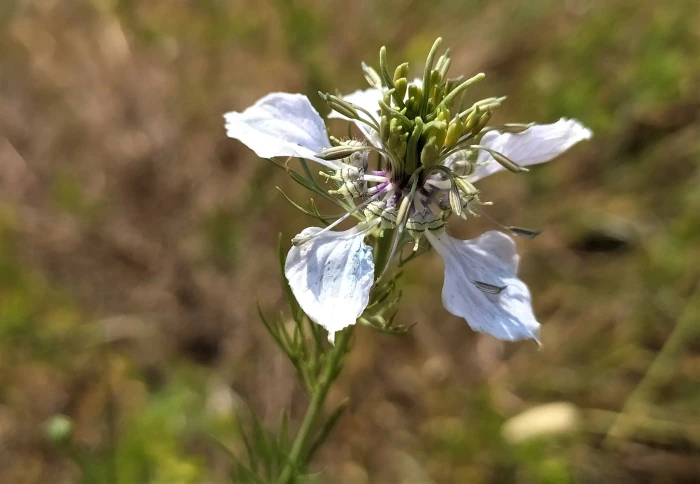Field Nigella
(Nigella arvensis)
Field Nigella (Nigella arvensis)
/
/

arthur_haendler
CC BY 4.0
Image By:
arthur_haendler
Recorded By:
Copyright:
CC BY 4.0
Copyright Notice:
Photo by: arthur_haendler | License Type: CC BY 4.0 | License URL: http://creativecommons.org/licenses/by/4.0/ | Rights Holder: arthur_haendler | Publisher: iNaturalist | Date Created: 2023-06-18T11:55:53-07:00 |

























Estimated Native Range
Climate Requirements for Sydney, Australia
| This Plant | Your Site | Plant Suitability for Your Location | ||
|---|---|---|---|---|
| • Precipitation | 3" - 59" | 49" | Aquatic | Aquatic |
| • High Temp. | 58°F - 101°F | 79°F | Your summer temperatures are normal for this plant. | Excellent |
| • Low Temp. | 9°F - 52°F | 46°F | Your winter temperatures are normal for this plant | Excellent |
This plant may not grow well at your location - your precipitation is too high.
Summary
Nigella arvensis, commonly known as field nigella or wild fennel flower, is an annual herb native to a variety of habitats including grasslands, fields, and open woodlands in North Africa, central, southern, and eastern Europe, the Caucasus, and the Middle East. It typically grows to a height of 20-50 cm and has a delicate, lacy foliage with finely divided leaves. The plant produces solitary, pale blue to white flowers with five to ten petals, blooming from late spring to early summer. The flowers are followed by distinctive inflated seed pods that are often used in dried flower arrangements.
Field nigella is valued for its charming flowers and unique seed pods, which add interest to garden borders and wildflower meadows. It is relatively low-maintenance, preferring full sun to light shade and thriving in well-drained soils. While not commonly cultivated, it can be grown from seed and is sometimes used in traditional medicine. It is also considered a good plant for pollinators. However, it can be susceptible to fungal diseases in wet conditions.CC BY-SA 4.0
Field nigella is valued for its charming flowers and unique seed pods, which add interest to garden borders and wildflower meadows. It is relatively low-maintenance, preferring full sun to light shade and thriving in well-drained soils. While not commonly cultivated, it can be grown from seed and is sometimes used in traditional medicine. It is also considered a good plant for pollinators. However, it can be susceptible to fungal diseases in wet conditions.CC BY-SA 4.0
Plant Description
- Plant Type: Herb
- Height: 0.75-0.8 feet
- Width: 0.75-0.75 feet
- Growth Rate: Moderate
- Flower Color: Blue
- Flowering Season: Summer
- Leaf Retention:
Growth Requirements
- Sun: Full Sun, Part Shade
- Water: Medium, High
- Drainage: Medium
Common Uses
Border Plant, Butterfly Garden, Deer Resistant, Low Maintenance
Natural Habitat
Grasslands, fields, and open woodlands
Other Names
Common Names: Devil-in-a-bush, Nigella, Wild Fennel, Wild Fennel-Flower, Love in a mist
Scientific Names: Nigella arvensis, Nigella glauca, Nigella glauca, Nigella hispanica
GBIF Accepted Name: Nigella arvensis